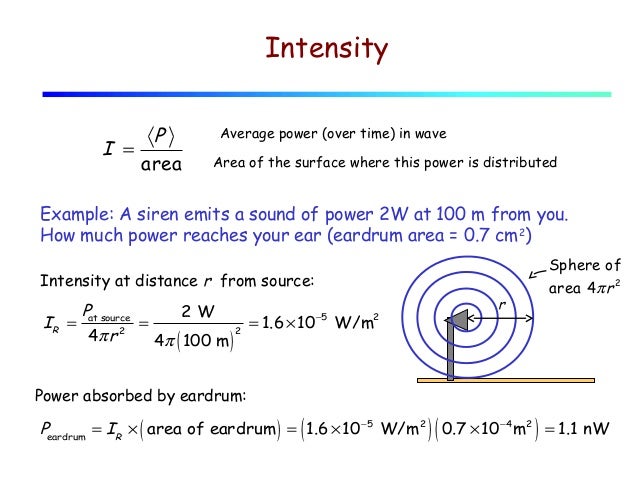
Intensity of sound results from two factors: the amplitude of the sound waves and how far they have traveled from the source of the sound.

The unit of intensity is the decibel (dB). The loudness of sound is determined, in turn, by the intensity, or amount of energy, in sound waves. Phone – is a unit of loudness that is subjective. Sone – is said to be a unit of perceived loudness that is equal to the loudness of a 1000-hertz tone at 40 dB above threshold, starting with 1 sone. The ratio of the pressure of the sound to the reference pressure to something. The loudness of a sound relates the intensity of any given sound to the intensity at the threshold of hearing. Therefore, loudness is measured by the amplitude and its SI unit is phon. Phon is defined as the number of decibels of a sound whose frequency is 1000 Hertz. The more amplitude a sound has, the louder it is. Amplitude, reported on the decibel (dB) scale, measures its pressure or forcefulness. It is important that you understand the calibration, operation and reading the instrument you use.ĭecibels measure sound intensity Frequency, reported in Hertz (Hz), measures the number of sound vibrations in one second. The most common instruments used for measuring noise are the sound level meter (SLM), the integrating sound level meter (ISLM), and the noise dosimeter. Loudness is a subjective characteristic of a sound (as opposed to the sound-pressure level in decibels, which is objective and directly measurable).
9 What do you use to measure peak sound pressure?. 8 What do you use to measure the intensity of noise?. 7 What are the units used to measure sound?. 6 What is loudness of sound in physics?. 5 What is the loudness of sound called?. 3 What is SI unit of loudness of sound *?. 1 Is the commonly used unit for loudness?. On a logarithmic scale, equal intervals correspond to multiplying by 10 instead of adding equal amounts. The decibel scale is a logarithmic measure of the amplitude of sound waves. Such scale is known as the “decibel scale”.The intensity level of different sounds in decibel is given in the table: Sources of sound Using equation (5), we can construct a scale for measuring the intensity level of sound. If the intensity level is measured in decibels, then equation (4) becomes: It must be remembered that 1 bel is equal to 10 dB. Generally, a smaller unit called decibel is used. Therefore, using k=1 in equation (3) becomes:īel is a very large unit of the intensity level of a sound. If intensity I of any unknown sound is 10 times greater than the intensity I 0 of the faintest audible sound i.e., I=10 I 0, and the intensity level of such a sound is taken as a unit, called bel, the value of k becomes 1. The value of k depends not only on the units of I and I 0 but also on the unit of intensity level. Therefore, the intensity level of an unknown sound is given by This difference,(L-L 0), between the loudness L of an unknown sound and the loudness L 0 is called the intensity level of the unknown sound. Subtracting equation (2) from (1), we get: Let L 0 be the loudness of the faintest audible sound of intensity I 0 and L be the loudness of an unknown sound of intensity I, then by equation (1), we can write 
Where k is a constant of proportionality.






 0 kommentar(er)
0 kommentar(er)
